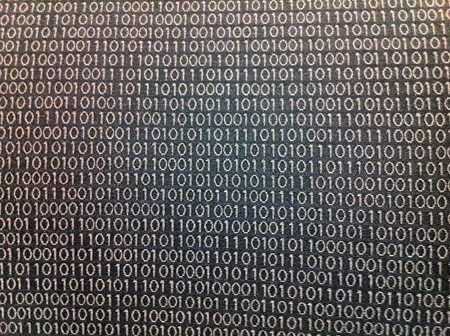Painting the World with Pixels
by Brian Hayes
Published 4 March 2012
You are guiding your cart down the aisles of the supermarket when the price tag on the Cheerios beckons to you. Literally. An animated figure on the shelf tag waves and signals for you to come closer. When the array of cameras embedded in the shelf gets a better look at you, the tag offers you a deal, lowering the posted price. Enjoy your breakfast.
This fantasy of “dynamic pricing” is not a product of my own fevered imagination. I heard about it the other day at the March meeting of the American Physical Society, in a session on reflective color displays. Animated and interactive price tags were suggested as a motivating application for this technology. According to a speaker from Hewlett-Packard, the other components of the personalized pricing system (the cameras, the image-processing software, the communications network) are already available or soon will be; the main constraint is the display, which needs to provide reasonable image quality (comparable to newspapers) at low cost and low power. HP is at work on meeting this need (and so are several other companies and research groups). For some details of the Hewlett-Packard work, see this technical report.
I yield to no one in my technophilic ardor, but I have to say that the prospect of animated, haggling grocery-store price tags does not fill me with yearning for the future. And I suspect the idea might meet with a certain amount of legal and social resistance. (What are the acceptable criteria for adjusting prices offered to a given customer? Age? Gender? Race?)
But if the underlying display technology succeeds—and the demos already look pretty impressive—it’s not just price tags that I worry about. We could find ourselves up to our eyeballs in pixels. The aim is to manufacture the display material by a high-volume, roll-to-roll process. If they can get the cost down to $100 per square meter, a supermarket shelf tag might cost a dime or a quarter, a bumper sticker would be a dollar or two, an advertising card in the subway might be worth $10, and a billboard by the highway $20,000. Wrapping an entire Wal-Mart in digital ads could be done for roughly $1 million. Each of these surfaces would present a moving, video-like image—a window onto another world, covering up some fraction of this one.

Opelousas, La., 14 January 2001
Publication history
First publication: 4 March 2012
Converted to Eleventy framework: 22 April 2025



